Occupational Safety Training for the Agriculture Sector
99,000 ₫
Note: The price above is calculated per person and may vary depending on the number of trainees participating in the course and market fluctuations. For more accurate pricing support, please refer to the quotation list or contact our consultants directly.
The Agricultural Safety Training Course is a program that equips trainees with occupational safety knowledge for Group 3. The course enhances awareness of how to prevent workplace accidents during production operations. Accordingly, the occupational safety training content closely follows Article 18 of Decree 44/2016/NĐ-CP.
Table of Contents
Toggle1. Overview of the Agriculture Industry
a. What is the agriculture industry?
Agriculture is an important economic sector in which activities related to the manufacturing, processing, and distribution of products related to land and plants are carried out. It includes farming, animal husbandry, forestry, hydroponics, and activities related to the manufacturing and processing of food from agricultural products. Agriculture is a very important economic sector in most countries around the world and makes a significant contribution to the global economy.
The agriculture industry is one of Vietnam’s key economic sectors, making a significant contribution to the country’s GDP and exports. The situation of Vietnam’s agriculture industry in recent years has seen many positive changes, but there are still many challenges that need to be addressed.
According to the Ministry of Agriculture and Rural Development, Vietnam’s agricultural output in 2020 reached over 42 million tons, an increase of 2.68% compared to 2019, of which rice output reached over 42 million tons, an increase of 3.3% compared to 2019. Vietnam has also become one of the world’s leading exporters of agricultural products, with products such as coffee, rubber, pepper, rice, cashews, tra fish, cocoa, fruits and vegetables…
However, the agriculture industry is still facing many challenges, including:
- The shift in economic structure from agriculture to industrial and service sectors, leading to a gradual decrease in arable land and the number of workers in the agriculture industry.
- Many small-scale farmers and manufacturing units do not have enough capital to invest in modern and sustainable agriculture manufacturing.
- The average age of Vietnamese farmers is quite high, especially in rural areas, making it difficult to apply new techniques and increase manufacturing productivity.
- Unstable weather, affected by climate change, makes agricultural manufacturing difficult.
- Many incidents related to food safety, affecting the health of consumers and the image of Vietnam’s agriculture industry.

b. Types of agricultural manufacturing machinery
In the agriculture industry, many different types of manufacturing machinery are used to help jobs be done more efficiently and quickly. Here are some types of manufacturing machinery in agriculture:
- Plow: A plow is a machine used to dig soil, fertilize, and turn soil over before planting. A plow saves time and effort compared to plowing by hand.
- Harvester: A harvester is a machine used to harvest rice, corn, and other crops. A harvester can save a lot of time and effort compared to harvesting by hand.
- Drying machine: A drying machine is a machine used to dry agricultural products such as cashews, rice, corn, wheat, etc.
- Sprayer: A sprayer is a machine used to spray pesticides, herbicides, or fertilizers on crops. A sprayer helps make spraying faster and more efficient.
- Automatic planter: An automatic planter is a machine used to plant crops automatically, which helps make planting faster and more efficient.
- Lawnmower: A lawnmower is a machine used to mow grass, which makes watering and caring for plants easier.
- Tiller: A tiller is a machine used to till the soil, ensuring the soil is airy and helping plants grow better.

These types of manufacturing machinery in agriculture help make jobs in the agriculture industry easier and more efficient. However, to use these machines safely and correctly, technical training and guidance are needed.
c. Common jobs in the agriculture industry
Common jobs in the agriculture industry include:
- Land cultivation: This is the basic and first job in the agricultural manufacturing process. Land cultivation includes activities such as digging soil, sowing seeds, planting, fertilizing, watering, and harvesting.
- Animal husbandry: This is the job of raising animals such as livestock, poultry, fish… to get meat, milk, eggs, skin, and other animal products.
- Farming: This is the job of planting crops such as rice, corn, beans, coffee, rubber… to harvest agricultural products.
- Food manufacturing: This is the job of processing products from agricultural and animal products such as frozen food, confectionery, beverages, dairy products…
- Agricultural products business: This is the job of buying and selling agricultural products such as food, vegetables, livestock and poultry, raw materials for food manufacturing.
- Biotechnology: This is the job of using science and technology to create solutions for agriculture such as developing crop varieties, preventing diseases for animals…
- Agriculture management: This is the job of managing, planning, and implementing manufacturing activities in agriculture.
d. Typical businesses in the agriculture industry
There are many typical businesses in the agriculture industry in Vietnam. Here are some examples:
- Hoang Anh Gia Lai International Agriculture Joint Stock Company (HAGL Agrico): Is the largest agricultural company in Vietnam with a scale of operation on more than 100,000 hectares of land for planting trees in the Central Highlands, Southeast, and Central provinces. HAGL Agrico specializes in planting fruit trees, industrial crops, and food such as coffee, pepper, cocoa, bananas, coconuts, avocados, oranges, rambutans, cabbages, potatoes, wheat, beans, cashews, cotton, etc.
- Loc Troi Group: Is a multi-industry group with its main activities in the agriculture sector. Loc Troi has many planting and crop variety manufacturing projects in the Central, Central Highlands, and Mekong Delta provinces. In addition, Loc Troi also invests in nutritional products, health care, fertilizers, agricultural chemicals, and processed products from crops.
- C.P. Vietnam International Agriculture Joint Stock Company (CP Vietnam): Is one of the leading animal husbandry and food companies in Vietnam. CP Vietnam specializes in the manufacturing and supply of animal husbandry products, such as pork, chicken, duck, quail, beef, tra fish, shrimp, etc. The company also has agricultural projects, animal feed manufacturing, and fertilizer in the Central and Mekong Delta provinces.
- Vina T&T Group Joint Stock Company: Is one of the leading companies in the agriculture sector in Vietnam. Vina T&T Group specializes in the manufacturing and export of agricultural products such as rice, coffee, pepper, cashews, cotton, cassava, corn, etc. The company also invests in food processing products such as confectionery and beverages.
2. Overview of the occupational safety training course for the agriculture industry
a. What is occupational safety training for the agriculture industry?
- Occupational safety training for the agriculture industry are training sessions that equip employees with awareness on how to prevent workplace accidents. Accordingly, people who work directly in the agriculture industry are subjects belonging to Group 3.
- The occupational safety training course will help employees recognize and avoid dangers, and limit the risks of workplace accidents while working.
REGISTER FOR OCCUPATIONAL SAFETY TRAINING SERVICES
b. Training duration
First-time safety training duration
- Total training duration is at least 24 hours, including examination time.
- 8 hours of theoretical study on the system of policies and laws on occupational safety and health
- 8 hours of theoretical study on basic knowledge of occupational safety and health
- 4 hours of theoretical study on specialized training content
- 2 hours of practical study on specialized training content
- 2 hours of theoretical examination at the end of the training course
The safety training center will distribute the time into many training sessions depending on the time arrangement for the employees. But usually, there will be 6 training sessions, the course will take place over 3 days, on the condition that the manufacturing business can arrange continuous study time.
Periodic safety training duration
- Before the occupational safety card expires, if the employee wants to have it reissued, they must undergo a periodic occupational safety training course, with the periodic safety training duration being at least 50% of the first-time safety training duration.
Explanation: the total periodic occupational safety training duration is at least 12 hours, including examination time. After completing the periodic training course and passing the exam, the employee’s occupational safety card will be reissued and extended.
c. Contents of the training course
| No. | TRAINING CONTENT | TRAINING DURATION (HOURS) | |||
| Total | Of which | ||||
| Theory | Practice | Examination | |||
| I | System of policies and laws on occupational safety and health | 8 | 8 | 0 | 0 |
| 1 | Overview of the system of legal documents on occupational safety and health. | 6 | 6 | ||
| 2 | System of technical standards and regulations on occupational safety and health. | 1 | 1 | ||
| 3 | Specific regulations of state management agencies on occupational safety and health when newly building, expanding or renovating facilities, premises for manufacturing, using, preserving, storing and inspecting types of machinery, equipment, materials, and substances with strict requirements on occupational safety and health. | 1 | 1 | ||
| II | Basic knowledge of occupational safety and health | 8 | 8 | 0 | 0 |
| 1 | Basic knowledge of hazardous and harmful factors at the workplace. | 4 | 4 | ||
| 2 | Methods to improve working conditions. | 1 | 1 | ||
| 3 | Safety culture in manufacturing and business. | 1 | 1 | ||
| 4 | Rights and obligations of employers and employees; policies, benefits on occupational safety and health for employees; functions, duties of the occupational safety and health network. | 1 | 1 | ||
| 5 | Occupational safety and health regulations, signs, and instructions for occupational safety and health and the use of safety equipment, personal protective equipment; skills and techniques for first aid for workplace accidents, prevention of occupational diseases. | 1 | 1 | ||
| III | Specialized training content | 6 | 4 | 2 | 0 |
| General knowledge about types of machinery, equipment, and substances that generate hazardous and harmful factors; analysis, assessment, management of occupational safety and health risks, and safe working procedures with machinery, equipment, and substances with strict requirements on occupational safety and health. | 6 | 4 | 2 | ||
| IV | Examination of safety training content at the end of the course | 2 | 2 | 0 | 0 |
| Total | 24 | 22 | 2 | ||
See more training content of 6 groups
d. Occupational safety certificate
After completing the occupational safety training course and at the same time passing the examination, the employee will be issued an occupational safety card (in practice, also called a Group 3 occupational safety certificate).
In which, the Group 3 safety card will clearly show information such as: full name, date of birth, specific job and work environment. It also includes the training duration, a red seal, and a signature confirming the completion of the training course.
According to the regulations for issuing safety cards clearly stated in clause 2 of Article 24 of Decree 44/2016/ND-CP, there are 2 cases:
- In the case where the employer and the employee have a labor contract, the employer must sign, seal, and affix a border seal on the safety card for the trained person in Group 3 after they complete the training course from the occupational safety training unit and pass the examination.
- In the case of freelancers or seasonal workers who do not have a labor contract, the training unit must sign, seal, and affix a border seal on the safety card for the employee after they complete the training course from the occupational safety training unit and pass the examination.

3. Recognizing dangers in the agriculture industry
In the agriculture industry, there are many potential dangers to the health of workers, including:
- Toxicity of pesticides and fungicides: Farmers often have to use pesticides and fungicides to protect crops from pests and diseases. However, if safety regulations are not followed, workers can be exposed to toxic substances, which pose a danger to their health.
- Dangers from agricultural machinery: Agricultural machines such as plows, harvesters, lawnmowers, fertilizer spreaders… can cause workplace accidents if not used correctly.
- Dangers from aquatic agents: In aquatic product manufacturing, workers can be exposed to dangerous agents such as algae toxins, H2S gas, chemicals in the processing of aquatic products…
- Dangers from physical agents: In agriculture, workers can be exposed to physical agents such as high temperatures, humidity, electricity, noise…
- Dangers from outdoor work: Outdoor workers have to face natural elements such as sun, rain, wind, cold… which can cause health damage.
4. Safety measures for the agriculture industry
Safety measures for the agriculture industry to protect the health and lives of workers during the manufacturing process include:
- Training and occupational safety and health training: Agricultural employees need to be trained in occupational safety techniques, how to use and maintain equipment and machinery correctly.
- Protective equipment such as safety glasses, masks, gloves, safety shoes, face masks, etc. should be used correctly and fully to protect workers from dangerous agents.
- Agricultural equipment and machinery should be regularly inspected, maintained, and repaired to ensure safety and efficiency during use.
- Chemicals used in agriculture must be stored correctly and used in the right dosage, and there must be maximum protective measures to avoid direct contact with workers.
- Agricultural employees should have regular health checks to detect early health problems related to exposure to toxic agents.
- Working conditions such as temperature, humidity, light, air, etc. should be controlled and kept stable to ensure the health and safety of workers.
- Businesses and authorities need to have strict occupational safety management policies, ensuring that manufacturing and business in the agriculture industry are carried out safely and effectively.
- Periodically organize work environment monitoring in the industrial park and factory, collect and analyze harmful factors for employees, thereby adjusting to reduce the level of harm to prevent occupational diseases for them.
5. Accidents in the agriculture industry
Types of accidents in the agriculture industry include:
- These accidents often occur due to the use of agricultural machinery, especially plows, harvesters, and tillers. These accidents often cause injuries and deaths to workers.
- During the agricultural manufacturing process, many types of toxic chemicals are used to kill weeds, pests on crops, posing a danger to the health of farmers and those who come into contact with these agricultural products.
- Workers in the agriculture industry, especially food manufacturing workers, can be infected with bacteria, mold, and toxic chemicals during the food manufacturing and processing process.
- Workers in the agriculture industry often have to move from one place to another to harvest and transport agricultural products, and therefore are at risk of traffic accidents.

6. Benefits of occupational safety training for the agriculture industry
An Toan Nam Viet provides businesses with great benefits after completing occupational safety training courses according to the regulations in Decree 44/2016/ND – CP on occupational safety and health for companies, factories, and businesses.
- Employees can recognize the potential risks of workplace accidents and have preventive measures to avoid accidents.
- Your Business can establish risk prevention measures in the manufacturing, operation, and maintenance processes.
- Minimizes costs when safety risks occur in the workplace.
- The uninterrupted manufacturing process will help increase labor productivity and product quality.
- Correctly complies with the law on occupational safety, avoiding legal risks.
- Creates a reputation and professionalism in all aspects, thereby enhancing the brand for your business.
The training courses of An Toan Nam Viet are a solution to prevent and combat external factors from affecting each individual so that they can avoid dangers that can lead to injury or, more seriously, death.
REGISTER FOR OCCUPATIONAL SAFETY TRAINING SERVICES
7. Customer feedback after completing the training course
An Toan Nam Viet has many years of experience in the mission of accompanying many businesses in Vietnam in general and in the southern provinces in particular. And that responsibility is something very valuable to An Toan Nam Viet, which is why An Toan Nam Viet’s Occupational Safety Training is always focused on becoming more and more professional. And the motivation for An Toan Nam Viet to grow strong to this day comes from the positive feedback and suggestions from businesses. Below are the feedback from our partners that we have served.
BAC NAM E&C CONSTRUCTION INVESTMENT JOINT STOCK COMPANY
“The first time I used the service at An Toan Nam Viet, I was very surprised by the enthusiastic 24/7 support of the team of consultants. The class organization was very quick and convenient for our company, thank you very much for the service of An Toan Nam Viet!”
HOA DAT CONSTRUCTION AND TRADING JOINT STOCK COMPANY
“An Toan Nam Viet’s service has helped us a lot in simplifying occupational safety and completing safety records for our work process. The team of consultants is enthusiastic and timely in answering our questions. 5 stars for An Toan Nam Viet”
See more customer interviews after using the service of An Toan Nam Viet
8. An Toan Nam Viet’s Occupational Safety Training Capability
An Toan Nam Viet is a reputable and quality occupational safety training center in Vietnam today. With occupational safety training sessions held continuously at manufacturing workshops, factories or construction sites across the country (63 provinces and cities in Vietnam).
REGISTER FOR OCCUPATIONAL SAFETY TRAINING SERVICES
License for occupational safety training
- An Toan Nam Viet has been inspected and granted a certificate of eligibility for occupational safety and health training activities by the Department of Occupational Safety of the Ministry of Labor – Invalids and Social Affairs. This further strengthens our capacity for occupational safety training.

Documents and lectures
- Before occupational safety training documents are put into the Occupational Safety Training Courses, they are reviewed and censored to ensure that the lectures are always correct in terms of knowledge and effective when applied.
- The teaching method of our instructors is synchronized according to the teaching standards of An Toan Nam Viet, which is a method that experts in occupational safety and health training have researched and summarized during the teaching process to bring the highest knowledge acquisition efficiency to students.
Facilities
- Controlling the factors in the classroom that affect the training process will increase teaching efficiency and the effectiveness of knowledge acquisition for students.
- Our facilities supporting the training course always have spacious classrooms that meet the standards for area, lighting, training equipment, etc.
9. Reputable and quality safety training center nationwide
At An Toan Nam Viet, we always prioritize our professional dedication to occupational safety training. For us, imparting knowledge on self-protection to workers so that they can have a safe path to earn a living is a contribution to building the country.
To ensure the training is effective, we prepare carefully and meticulously every little detail, no matter how small. From preparing tools, equipment, teaching aids to curriculum, documents, sound, and lighting.
Our occupational safety training instructors are experts with many years of experience in the field. They even have research projects identifying dangers in all occupations and how to prevent them.
The instructors’ lectures are summarized from practice and conveyed in a vivid and easy-to-imagine way to workers. These factors help workers feel comfortable during their study time and absorb our teaching knowledge well. Of course, the knowledge conveyed always closely follows Decree 44/2016/ND-CP.
From there, they grasp many measures to prevent dangers and how to protect themselves. At the same time, they also apply it in the most appropriate way in their actual work.
Our safety training center is proud to be a unit that provides reputable and professional occupational safety training services with the following advantages:
- Competitive Training costs but training quality is still guaranteed.
- Flexible Training schedule to suit the manufacturing situation of the Company and business.
- Fast occupational safety training certificate application procedures, in accordance with the law.
- Training instructors are experienced professionals with many years in the profession.
- The classroom controls factors that affect the training process, increasing teaching efficiency and the effectiveness of knowledge acquisition for students.
- The lectures are compiled to be suitable for occupational safety work at businesses.
- An Toan Nam Viet works with dedication and professionalism to support customers accurately and quickly.

10. Refer to more occupational safety training materials for the agriculture industry
- Set of occupational safety training materials
- Set of occupational safety training test questions
- Occupational safety multiple-choice test for the agriculture industry
- Occupational safety materials for the agriculture industry
- Slides of occupational safety training lecture for the agriculture industry
1 review for Occupational Safety Training for the Agriculture Sector
No comments yet

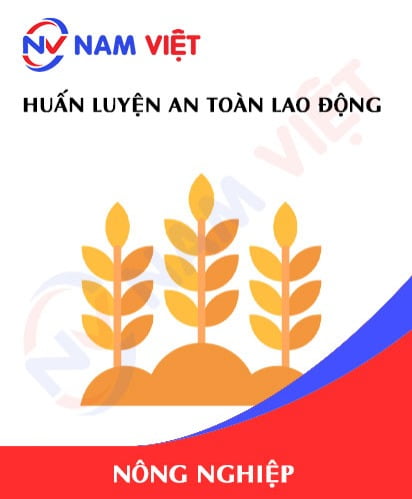
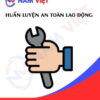
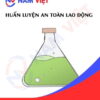



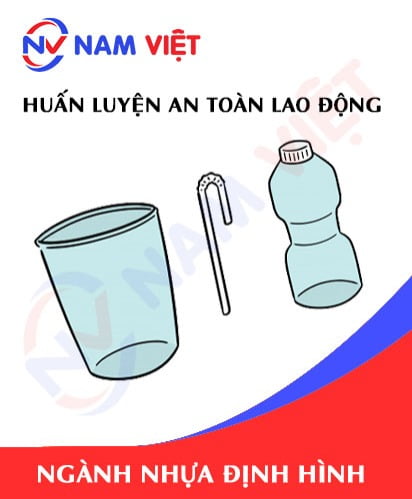
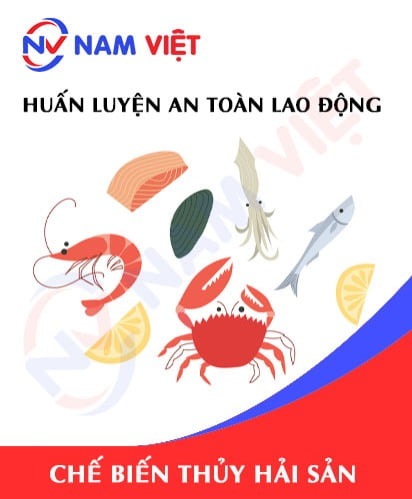
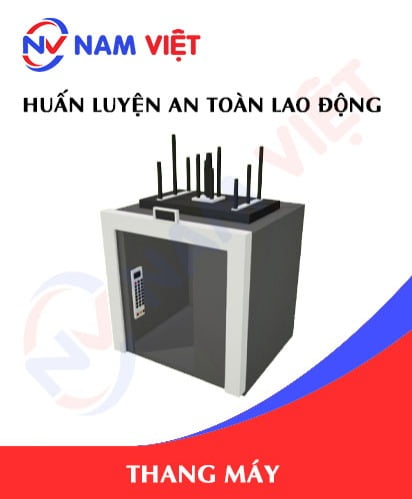
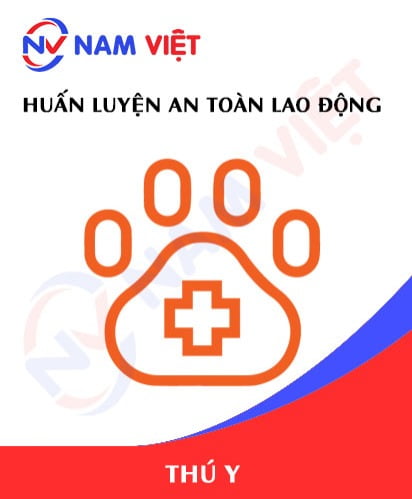
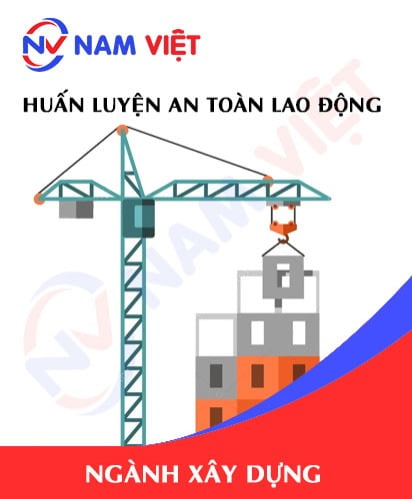
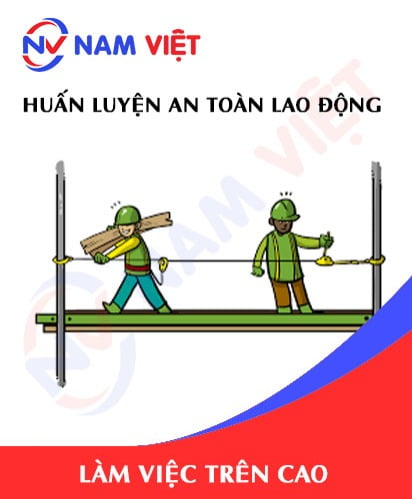
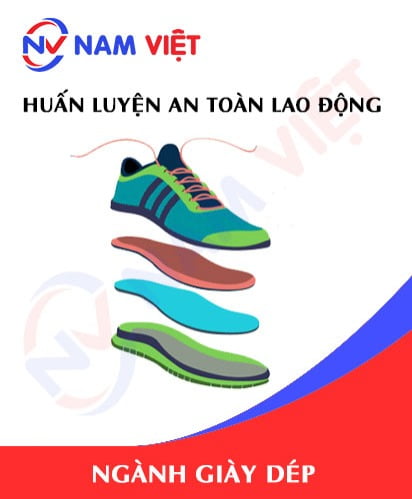
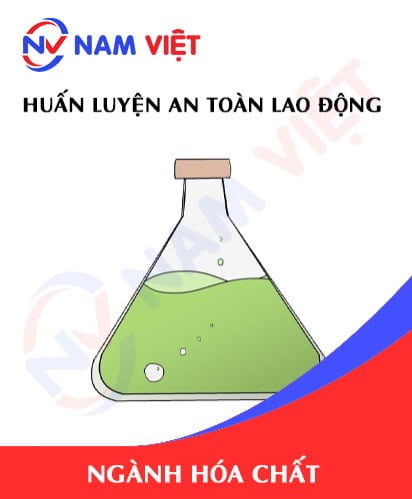
caotiensyhung.07081999
OK LẮM NHÉ